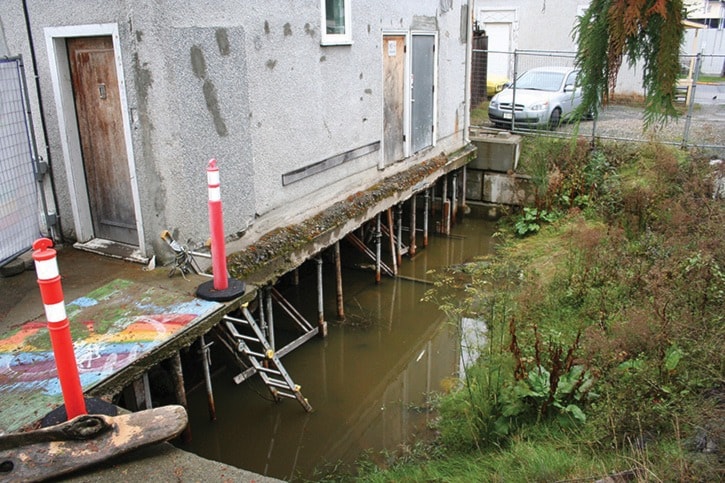Some residents in the Cook Street Village area are living on contaminated land.
Just how polluted remains to be seen. Nonetheless, a chemical discovered deep in the soil in their block has some homeowners fearful of how their property values may be affected.
McKenzie Street resident Stephen Ban’s home is around the corner from a building at 325 Cook St., believed by environmental scientists to be the source of the chemical perchloroethylene, or perc, which is commonly used in the dry cleaning business. Fairfield Cleaners operated on the site from the 1970s to 2007.
“The main thing for us is other people’s perspective,” Ban said, referring to future sales potential.
He and his wife moved into their house in May and have no current plans to sell. But he is concerned about the possibility of one day having to either disclose contamination to a potential buyer or deal with soil remediation.
“We still don’t know a whole lot,” he said, adding that he hopes the risk to human health and the environment is found to be minimal.
Saanich-based Franz Environmental Inc. has been testing for the presence and spread of perc for the past two years. Most recently, crews took soil samples from underneath McKenzie, Oxford, Chester, Linden and Chapman streets between Sept. 9 and 13.
Contamination has so far been confirmed on three residential properties on McKenzie, including Ban’s, and one on Oxford Street, said Jan Abbott, an environment scientist and project manager for Franz.
Soil testing around the Cook Street building began several years ago, in relation to a development permit application made by a previous owner, Abbott said. Subsequent testing found the presence of perc, a heavy substance that sinks into the groundwater and can go deeper, but can also create vapours that rise to the surface, she said.
The recent testing, for which results are due back “imminently,” Abbott said, is the latest attempt to determine just how far the chemical has spread and what the risks might be.
“We’re hoping to get a line in the ground saying ‘on this side it’s contaminated and on this side it’s not,’” she said. “Then we can go forward with a risk assessment to human health and environment, then look at remediation.”
Some neighbours attending a Sept. 5 information meeting on the issue voiced concern over the safety of eating produce from backyard gardens. Since the testing began, close to 50 soil vapour monitors have been placed in yards and commercial properties in and around the block. A dozen were placed in bore holes after the recent road drilling, and 10 more placed on residential properties.
Abbott said residents and other property owners can find information about contaminated sites and related requirements and responsibilities on the B.C. Ministry of Environment website (bit.ly/1dOzijI).
She expects the results of soil testing, as well as a preliminary risk assessment, to be available for the next public information meeting, to be held at the Cook Street Activity Centre in November.
